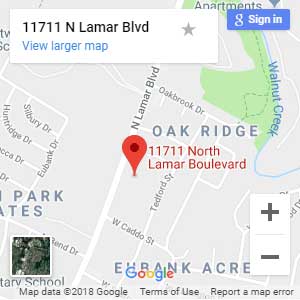Updated on August 11th, 2020
It all started after your back surgery. Your doctor prescribed some pain medication and you took it regularly, as prescribed. Every once in a while, you felt like you needed a little more, so you popped an extra pill or two. A few weeks later you found yourself back in your doctor’s office, lying about your pain just so you could get more. Now you can’t function without them. You know you probably should stop but the withdrawal is too intense when you try. You never considered it might happen to you, but you’re addicted to your prescription drugs.
Table of contents
The scenario above is more common than you might think. In fact, the National Institute on Drug Abuse estimates 54 million Americans have used prescription drugs for non-medical reasons at least once in their lifetime.1 According to the 2018 National Survey on Drug Use and Health, about 6.4 million Americans ages 12 and up misused prescription drugs in the past month.2
What Is Prescription Drug Abuse?
Prescription drug misuse or abuse is defined as any non-medical usage of a drug prescribed by a doctor or taking medicine in any other dosage or manner other than prescribed. Examples include:
- Taking prescription medicine to get high
- Taking someone else’s prescription (even to alleviate a legitimate medical problem)
- Taking a larger dose than your doctor prescribed
- Taking your prescription medication more often than prescribed
What Are the Most Commonly Abused Prescription Drugs?
The three classes of prescription drugs most commonly misused are opioids, sedatives, and stimulants. Examples of specific prescription drugs that are commonly abused are listed below under each category.
Prescription Opioids
Misusing opioid drugs can happen in a variety of different ways. Most often, when a person abuses or misuses prescription opioids, he or she takes medicine that was prescribed for someone else, takes a higher dose than was prescribed, or takes a prescription opioid to get high.3
Opioid abuse has become a serious epidemic, and to some people, it may not be clear why their loved ones begin abusing prescription opioids in the first place. According to the Substance Abuse and Mental Health Services Administration, there are four main reasons a person may choose to misuse prescription opioid drugs.4 They include:
- Recreational enjoyment – Some people just want to get high and leftover prescription opioids in their medicine cabinet might be the most convenient way to do it.
- Self-medication – A person may be experiencing pain and therefore thinks it is necessary to take someone else’s prescription opioids or a larger dose of their own medication to relieve the pain.
- To relax or relieve tension – Some opioid misuse may also be a result of continued attempts to relieve symptoms of anxiety and stress.
- Compulsive habits – Some people may develop a dependence or an addiction to opioid drugs even just from taking the medicine as prescribed by a doctor. This can lead to compulsive habits of taking larger or more frequent doses of opioids.
Opioids are commonly prescribed by doctors to relieve pain. A study published by the U.S. National Library of Medicine states opioid misuse has skyrocketed and is one of the fastest-growing forms of drug use in the United States.5 The amount of misinformation and skewed perceptions about the addictive properties of these drugs may be a large factor in this.
Common signs of prescription opioid abuse may include slurred speech, muscle twitches, constipation, loss of appetite, pinpoint pupils, or lethargy. Frequently abused prescription opioids include:
- Tylenol 3 and Robitussin (Codeine) – Prescribed as a cough suppressant and pain reliever, this drug is also known by various other brand names. It is taken in tablet, liquid, or capsule form.
- Sublimaze, Actiq, Duragesic (Fentanyl) – Commonly prescribed to relieve ongoing pain from cancer. It is most often administered in lozenge or patch form.
- Vicodin (Hydrocodone) – A powerful narcotic painkiller, this drug comes in capsule, liquid, or tablet form and is swallowed, snorted, or injected.
- Dilaudid (Hydromorphone) – Often prescribed for surgical patients in recovery to manage moderate to severe pain, this medication comes in pill or liquid form.
- Demerol (Meperidine) – This drug is a pain reliever and is also sometimes used to enhance anesthesia before or during surgery. It comes in tablet or liquid form.
- Dolophine, Methadose (Methadone) – This drug is prescribed for pain management or to help people cope with opioid addiction, but it is very addictive itself. It is taken in tablet or liquid form.
- Duramorph, Roxanol (Morphine) – This drug is used to treat chronic conditions and to manage extreme pain. It comes in tablet, liquid, or capsule form. When misused, it is injected, swallowed, or smoked.
- Opana (Oxymorphone) – Frequently prescribed to manage moderate to severe pain, this drug comes in tablet form and when misused, can be swallowed, snorted, or injected.
Who Is Most at Risk for Opioid Addiction?
Of the nearly 92 million adults who used prescription opioids in 2015, an estimated 11.5 million adults misused them. Another 1.9 million people had an opioid use disorder tied to prescription opioids in 2015.6
Anyone could develop an addiction or dependence on opioid prescription drugs, but some individuals may be at increased risk.6,7 Those who are more likely to abuse prescription opioids include:
- Individuals with chronic pain, mental health problems, or previous substance use problems
- Individuals who have experienced suicidal thoughts and major depression
- Individuals who are unemployed, uninsured, and lower-income
- Individuals who are male
- Individuals who live in rural areas
- Medicaid patients
- Individuals who receive high daily doses of opioids
Where Do Prescription Opioid Abusers Get Their Drugs?
According to the Centers for Disease Control and Prevention (CDC), most people who abuse prescription opioids get them from a relative for free.8 So even though you may think that giving a loved one an old prescription from your cabinet is helping, it may actually be harming them in the long run.
Other common ways people get prescription opioid medicines for non-medical use include:8
- From their primary care doctor
- Stealing prescription opioids from a friend or relative
- Buying prescription opioids from a friend or relative
- Buying prescription opioids from a drug dealer or other stranger
- Writing fake prescriptions, stealing prescription opioids from a clinic or pharmacy, or buying them on the internet
Prescription Sedatives
When prescribed by a doctor, these medications are usually used to treat sleeping problems or anxiety. Signs of misuse may include slurred speech, loss of interest in recreational activities, loss of coordination, lethargy, and possible short-term memory loss.
- Luminol (Phenobarbital) – This drug is a barbiturate and is typically prescribed on a short-term basis to treat insomnia, as an emergency treatment for seizures or to put you to sleep before surgery. It commonly comes in liquid, pill, or capsule form.
- Valium (Diazepam) – This barbiturate is prescribed to treat muscle spasms, anxiety, seizures, and sometimes alcohol withdrawal. It comes in pill, liquid, or capsule form.
- Xanax (Alprazolam) – This drug is a benzodiazepine and is used to treat serious anxiety or panic disorders. It is most often abused with alcohol.
- Ambien (Zolpidem) – This is a prescription sleep medication that is usually prescribed by a doctor for a few weeks. It is a pill, liquid, or capsule and when abused, is swallowed or injected.
Prescription Stimulants
Prescription stimulants are most often prescribed to treat attention-deficit hyperactivity disorder (ADHD) and narcolepsy. Signs of misuse may include delusions, hallucinations, weight loss, dilated pupils, trouble sleeping, hyperactivity, paranoia, trouble sleeping, and loss of appetite.
- Adderall (Amphetamine and Dextroamphetamine) – This stimulant is commonly prescribed by doctors for the treatment of sleep disorders and ADHD. It comes in tablet or capsule form.
- Ritalin (Methylphenidate) – Often prescribed for attention deficit disorder (ADD), ADHD and narcolepsy, this drug is often misused as a study aid.
How to Prevent Prescription Drug Abuse
Just because the prevalence of prescription drug abuse is growing, doesn’t mean you are powerless to it. There are several things you can do to prevent the misuse of prescription drugs in your life and in the lives of those you care about.
- Always take medication as prescribed. Talk to your doctor about the risks and correct usage of your medication and carefully review the information the pharmacist provides before taking it.
- Let your doctor know what other medications you are taking. This includes any over-the-counter medications.
- Properly dispose of any unused medications. Authorized collectors will take any unused prescription medications you may have lying around the house. You may also flush some medications down the drain. Never give them away to friends or family members.
- Get a second opinion. If you’re unsure about taking prescribed medication or think there are other options, ask your doctor for alternatives or visit another doctor.
- Seek out psychiatric care. If you are struggling with anxiety, depression, PTSD, or some other mental health issue, see a counselor or psychiatrist. This may help you avoid misusing prescription opioids in an attempt to cope or self-medicate.
Medical Detox for Prescription Drug Abuse
The best treatment for prescription drug abuse is medical drug detox followed by long-term rehab. Individuals who are addicted to prescription drugs cannot simply stop abusing them with sheer willpower. Addiction changes the way the brain functions, making it extremely difficult to modify those negative behaviors and drug-abusing habits.
The first step in treating prescription drug abuse is with a professional drug detox at a medically supervised detox center. A medical detox program typically involves a team of doctors, nurses, and clinical professionals that create a detox program based on the client’s needs and treat any uncomfortable withdrawal symptoms the client experiences during withdrawal.
The client’s detox program should be modified and changed as he or she progresses through withdrawal until a sober state is achieved. This allows for the most comfortable and safe drug detox experience possible.
Once the client has completed detox, he or she should continue with addiction treatment by enrolling in a long-term drug rehab program. Drug rehab will provide important life skills, support, and tools that are necessary to prevent relapse and maintain long-term sobriety.
If you or a loved one is addicted to prescription medications, it’s not too late to get help. Please contact Briarwood Detox Center today to learn more about our individualized prescription drug detox programs for men and women.
References:
- https://www.aaaceus.com/courses/articles/DA5050-2609-misuse-of-prescription-drugs.pdf
- https://www.samhsa.gov/data/sites/default/files/cbhsq-reports/NSDUHNationalFindingsReport2018/NSDUHNationalFindingsReport2018.pdf
- https://teens.drugabuse.gov/blog/post/what-does-it-mean-misuse-opioids
- https://www.samhsa.gov/data/sites/default/files/report_3210/ShortReport-3210.html
- https://www.ncbi.nlm.nih.gov/pmc/articles/PMC3387517/
- https://www.statnews.com/2017/07/31/opioids-use-disorder-prescription/
- http://managedhealthcareexecutive.modernmedicine.com/managed-healthcare-executive/news/top-risk-factors-opioid-use-disorder-overdose


